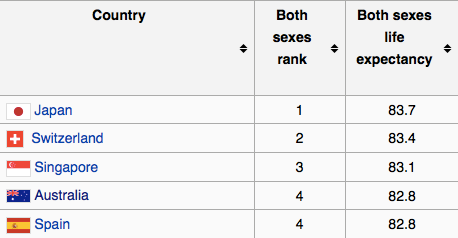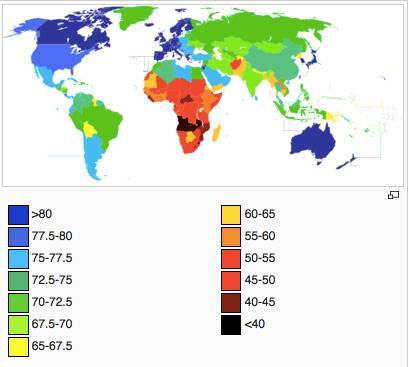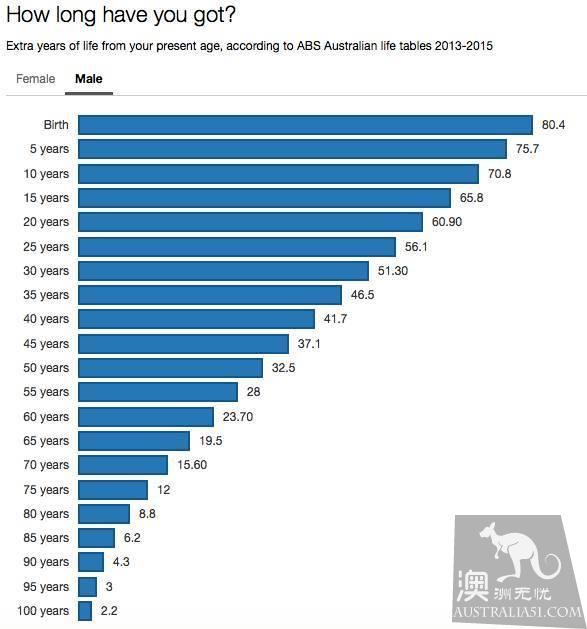According to the latest figures released by the Australian Bureau of Statistics, the life expectancy of the Australian population has reached a new high, with a life expectancy of 84.5 years for new-born girls and 80.4 years for newborn boys. It`s up from 83.3 and 78.5 a decade ago.

Australia is one of the countries with the longest life expectancy. According to figures released by the World Health Organization in May 2016, Japan ranks first in the world in life expectancy, reaching 83.7 years. Switzerland and Singapore followed, with Australia fourth, with a life expectancy of 82.8 years.

By contrast, Americans have a life expectancy of 79.3 years, ranking 31st among all countries; Chinese people have a life expectancy of 76.1 years, ranking 53th. The bottom 20 are all African countries, with life expectancy under 60.

The Australian Bureau of Statistics divides the population into 20 groups at the age of 5, giving the remaining life expectancy for each age group. As can be seen from the table, the overall life expectancy of women is higher than that of men.
The remaining life expectancy for a 30-year-old woman is about 55 years, the remaining life expectancy for a 50-year-old woman is about 36 years, and the remaining life expectancy for a 70-year-old woman is about 18 years.

The remaining life expectancy for a 30-year-old man is about 51 years, the remaining life expectancy for a 50-year-old man is about 32 years, and the remaining life expectancy for a 70-year-old man is about 16 years.
The average retirement age for Australian men is 65, and according to the analysis, men can enjoy 19.5 years of retirement, up from 12 years 50 years ago.

The life expectancy of the population varies from region to region. The Australian Capital District topped the list, with Canberra having a life expectancy of 85.3 years (female) / 81.2 years (men). Victoria followed closely, with life expectancy for newborns at 84.7 years (female) / 81.1 years (men).

If you are born in the Northern Territory this year, your life expectancy is only 78.5 years (female) / 75.7 years (men). Tasmania was the penultimate, with life expectancy of 82.8 years for women and 78.9 years for men.

The ethnic differences in the life expectancy of the population are evident. The life expectancy of aborigines in Australia is 10 years shorter than that of whites (9.5 years for females and 10.6 years for males).

For this data, Professor Peter McDonald of the University of Melbourne believes that it is for reference only and should not be taken too seriously because the life expectancy of the Australian population has been rising over the past 200 years as living conditions have improved and medical standards have improved. The data is based on projections based on "existing health care, living standards, and mortality rates remain unchanged."

